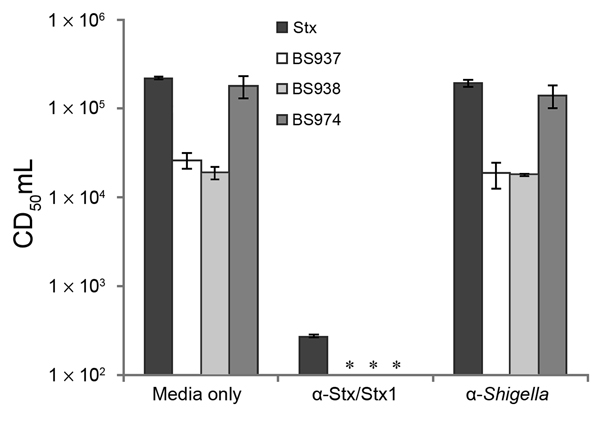Volume 20, Number 10—October 2014
Research
Clinical Isolates of Shiga Toxin 1a–Producing Shigella flexneri with an Epidemiological Link to Recent Travel to Hispañiola
Figure 1

Figure 1. Shiga toxin 1a (Stx1a) is produced and released from stx1a–encoding Shigella flexneri isolates. Overnight supernatants from BS937, BS938, and BS974 were serially diluted 10-fold in medium alone, medium containing anti-Stx/Stx1a antiserum, or antiserum against whole cell lysates of S. flexneri. After 2 hours of incubation, samples were analyzed in a Vero cell cytotoxicity assay. Stx from S. dysenteriae 1 was included as a positive control. CD50/mL is defined as the reciprocal of the dilution of Stx1 that kills 50% of Vero cells. *CD50/mL was below the level of detection. Data are averages of 3 independent experiments. Error bars indicate standard error. α indicates anti.
Page created: September 12, 2014
Page updated: September 12, 2014
Page reviewed: September 12, 2014
The conclusions, findings, and opinions expressed by authors contributing to this journal do not necessarily reflect the official position of the U.S. Department of Health and Human Services, the Public Health Service, the Centers for Disease Control and Prevention, or the authors' affiliated institutions. Use of trade names is for identification only and does not imply endorsement by any of the groups named above.